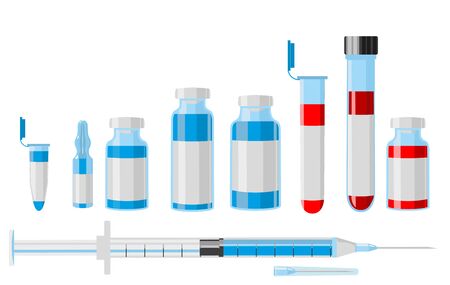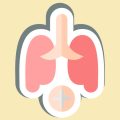1. Understanding ACL Injuries in Athletes
Overview of the ACL Anatomy
The anterior cruciate ligament (ACL) is a crucial band of tissue located in the center of the knee. It connects the thigh bone (femur) to the shin bone (tibia) and plays a key role in stabilizing your knee, especially during sports activities that involve quick stops, jumps, or changes in direction. The ACL helps prevent the tibia from sliding out in front of the femur and provides rotational stability to the knee.
Common Mechanisms of Injury in American Sports
ACL injuries are common among athletes in the United States, particularly those who play high-impact sports like football, basketball, soccer, and lacrosse. Most ACL injuries occur without direct contact. Instead, they often happen when an athlete:
- Suddenly changes direction or pivots
- Lands awkwardly after a jump
- Stops abruptly while running
- Suffers a direct blow to the knee (less common)
| Sport | Typical ACL Injury Mechanism |
|---|---|
| Football | Pivoting, rapid deceleration, tackles |
| Basketball | Jump landing, sudden stops and starts |
| Soccer | Changing direction, twisting movements |
| Lacrosse | Cutting maneuvers, quick turns |
The Impact on Athletic Performance
An ACL injury can have a major effect on an athlete’s performance and career. After injury, athletes often experience knee instability, pain, swelling, and reduced range of motion. Even after treatment and rehabilitation, it can take months before returning to play—and some may not regain their previous level of performance right away. In some cases, repeated injuries or incomplete recovery can lead to long-term issues such as osteoarthritis or ongoing knee problems.
2. Diagnosis and Assessment
Understanding ACL Injuries in Athletes
Diagnosing an ACL (anterior cruciate ligament) injury in athletes requires a thorough and systematic approach. In the United States, healthcare professionals combine clinical evaluation, imaging, and functional testing to make sure every athlete gets the right diagnosis and treatment plan. Heres how the process typically works.
Clinical Evaluation: First Steps
When an athlete presents with a knee injury, doctors start with a detailed history and physical exam. This helps determine if the ACL might be involved. Common questions include:
- How did the injury happen?
- Did you hear or feel a “pop” in your knee?
- Are you experiencing swelling, instability, or pain?
Physical tests like the Lachman test, Anterior Drawer test, and Pivot Shift test are key tools. These help the clinician assess the integrity of the ACL without any fancy equipment.
Imaging: Confirming the Diagnosis
If an ACL tear is suspected after the clinical evaluation, imaging comes next. The most common imaging methods used in the U.S. include:
| Imaging Method | Purpose | Notes for Athletes |
|---|---|---|
| X-ray | Rules out fractures or bone injuries | X-rays do not show ligaments but check for other issues |
| MRI (Magnetic Resonance Imaging) | Visualizes soft tissues like ligaments and cartilage | The gold standard for diagnosing ACL tears; also checks for meniscus or cartilage damage |
| Ultrasound | Assesses soft tissue injuries quickly | Used less frequently than MRI but may be helpful in some settings |
Functional Testing: Assessing Readiness for Sport
For athletes, its important to know not just if the ACL is torn, but how well their knee functions during sports activities. Functional tests are often used to measure strength, stability, and coordination before returning to play.
| Test Name | Description | Why It Matters for Athletes |
|---|---|---|
| Single-Leg Hop Test | Athlete hops forward on one leg as far as possible | Tests power and confidence in the injured leg compared to the healthy side |
| T-Test or Agility Drills | Athlete runs or moves through cones in specific patterns | Evaluates agility and ability to change directions safely |
| Isokinetic Strength Testing | Knee strength is measured using specialized machines | Makes sure muscles around the knee are strong enough for sport demands |
The Importance of Tailoring Assessment to Each Athlete
No two athletes are exactly alike. Age, level of competition, type of sport, and personal goals all influence which assessment tools and tests are chosen. In the U.S., best practice means customizing care so every athlete can safely return to their sport when theyre truly ready.
![]()
3. Non-Surgical Management Strategies
Evidence-Based Rehabilitation Protocols
For athletes with ACL injuries who choose not to undergo surgery, evidence-based rehabilitation is key to recovery and returning to sports activities. These protocols focus on restoring strength, stability, and function to the knee. Typically, non-surgical management is considered for those with partial tears, low activity levels, or when surgery is not recommended due to other health reasons. The main goal is to regain as much knee function as possible through structured rehab programs.
Core Elements of Conservative ACL Rehab
| Phase | Main Goals | Key Activities |
|---|---|---|
| Acute Phase (0-2 weeks) | Reduce pain & swelling Restore range of motion |
RICE (Rest, Ice, Compression, Elevation) Gentle stretching Quadriceps activation exercises |
| Early Rehab (2-6 weeks) | Improve muscle strength Enhance balance |
Closed-chain exercises Balance and proprioception drills Stationary biking |
| Strengthening (6-12 weeks) | Build muscle endurance Increase stability |
Resistance training Lunges and squats Athletic drills without pivoting/twisting |
| Advanced Rehab (3+ months) | Functional movement Sport-specific skills |
Plyometrics Agility training Straight-line running and cutting drills (if tolerated) |
The Role of Physical Therapy in ACL Recovery
A licensed physical therapist will design a personalized program that adapts as the athlete progresses. Therapists use manual therapy, targeted exercises, and modalities like electrical stimulation or ultrasound as needed. Consistent check-ins ensure exercises are done correctly and safely. In the US, many sports medicine clinics work closely with coaches and athletic trainers to keep everyone on the same page regarding the athlete’s progress.
Physical Therapy Tips for Athletes
- Stick to your rehab schedule: Regular sessions help you progress faster.
- Pain is a signal: Some soreness is normal, but sharp pain should be reported.
- Ask questions: Your therapist is there to support you every step of the way.
- Mental recovery matters too: Don’t hesitate to seek support if returning to sports feels overwhelming.
Return-to-Play Considerations for Non-Surgical Athletes
The decision to return to play after an ACL injury without surgery depends on several factors. Athletes must meet specific functional milestones—such as equal strength in both legs, good balance, no swelling or instability, and confidence in knee performance during sport-specific drills. Athletic trainers often use standardized tests like the single-leg hop test or agility ladders to assess readiness.
Main Return-to-Play Criteria Table
| Criteria | Description/Assessment Tool | Status Required Before Return |
|---|---|---|
| Knee Strength Symmetry | Limb symmetry index (LSI) compared to uninjured leg (>90%) | Able to perform strength tasks equally on both legs |
| No Instability Symptoms | No giving way or buckling during activity/drills | No reports of instability under stress/load |
| Pain-Free Movement | No sharp pain with functional movements or sport-specific tasks | Pain does not limit participation in full-speed drills/practice |
| Mental Readiness/Confidence | Athlete self-report scales and therapist observation of comfort level during play-like situations | Athlete expresses confidence and demonstrates safe mechanics under pressure/li> |
If these criteria are not fully met, more time in rehabilitation may be needed before getting back into competitive play. Remember, every athlete’s recovery path is unique and should be guided by the latest research and close communication between the athlete, therapists, coaches, and doctors.
4. Surgical Interventions and Post-Op Care
Overview of ACL Surgical Options in the U.S.
When athletes experience an ACL (anterior cruciate ligament) tear, surgery is often considered, especially for those wanting to return to high-level sports. In the United States, the two most popular surgical options are:
| Surgical Option | Description | Common Candidates |
|---|---|---|
| Autograft Reconstruction | Uses tissue from the patient’s own body (often hamstring or patellar tendon) | Younger, active athletes; lower risk of rejection |
| Allograft Reconstruction | Uses donor tissue (cadaver graft) | Older athletes or those seeking a shorter initial recovery time |
Surgeons in the U.S. typically recommend autografts for younger and more competitive athletes due to better long-term outcomes. Allografts are sometimes chosen for adults or those with previous failed surgeries.
Postoperative Rehabilitation Guidelines
Rehabilitation after ACL surgery is essential for a successful return to sport. Physical therapists in the U.S. follow evidence-based protocols tailored to each individual but generally follow these phases:
| Phase | Main Goals | Typical Duration |
|---|---|---|
| Immediate Post-Op (Weeks 0-2) | Reduce swelling and pain, restore knee extension, gentle range of motion exercises, begin walking with crutches as needed | First 1-2 weeks post-surgery |
| Early Rehab (Weeks 2-6) | Increase knee flexion, improve quad strength, wean off crutches, continue pain/swelling management | Weeks 2-6 post-surgery |
| Strengthening Phase (Weeks 6-12) | Restore normal gait, progress strengthening exercises, begin balance/proprioception training, light stationary cycling or swimming may start | Weeks 6-12 post-surgery |
| Advanced Training (Months 3-6+) | Sport-specific drills, agility work, plyometrics (as tolerated), prepare for gradual return to practice/play under supervision | Months 3-6 and beyond depending on progress and sport demands |
Key Tips for Post-Op Recovery in American Athletes:
- Follow your physical therapist’s instructions closely.
- Pain and swelling control are crucial early on—use ice and keep the leg elevated as advised.
- Avoid rushing back to sports too soon; patience leads to better long-term results.
- Mental health support and motivation can be just as important as physical rehab.
Criteria for Successful Recovery After ACL Surgery
Athletes and clinicians use several benchmarks before returning to full sports activities. These commonly include:
- Knee range of motion equal to the uninjured side
- No swelling or instability during everyday activities or basic athletic movements
- Adequate quadriceps and hamstring strength—typically at least 90% compared to the opposite leg, measured by strength tests or hop tests
- The ability to perform sport-specific drills without pain or hesitation
- A physician’s clearance based on clinical assessment and sometimes functional testing
Careful monitoring throughout recovery helps ensure athletes can safely return to play with reduced risk of re-injury.
5. Preventing Re-Injury and Optimizing Long-Term Outcomes
Techniques for ACL Injury Prevention
Preventing another ACL injury is a top priority for athletes returning to their sport. Evidence shows that specific training programs can significantly lower the risk of re-injury. These programs focus on:
- Neuromuscular training: Exercises that improve body awareness, balance, and movement control.
- Plyometric drills: Jumping and landing exercises to enhance explosive power and safe technique.
- Strength training: Building muscle around the knee, hips, and core for better support.
- Agility work: Practicing quick changes in direction while maintaining good form.
Coaches and trainers in the U.S. often use these techniques within team warm-ups or as part of off-season conditioning. Schools and clubs may even run workshops to teach athletes how to move safely on the field or court.
Evidence-Based Return-to-Sport Protocols
Returning to sports too soon after an ACL injury can put athletes at high risk for another injury. In the U.S., most sports medicine professionals follow evidence-based protocols to make sure an athlete is truly ready. These protocols typically include:
| Milestone | Description | Common Timeframe (Post-Surgery) |
|---|---|---|
| No pain or swelling | Knee is stable, without discomfort during daily activities | 2-3 months |
| Full range of motion | Knee can bend and straighten like the uninjured side | 3-4 months |
| Strength symmetry | Affected leg is at least 90% as strong as the uninjured leg | 5-7 months |
| Functional tests passed | Athlete completes jumping, sprinting, and cutting drills without problems | 6-9 months |
| Mental readiness | Athlete feels confident and not fearful about returning to play | Varies individually |
Athletic trainers, physical therapists, and team doctors collaborate closely with coaches and families to track these milestones before clearing athletes for full competition.
Resources for Maintaining Athletic Health in American Sports
The U.S. has many resources dedicated to long-term athletic health after an ACL injury. These include:
- NATA (National Athletic Trainers’ Association): Offers guidelines and educational materials for athletes, parents, and coaches.
- STOP Sports Injuries: A campaign by leading medical organizations providing injury prevention tips tailored to different sports.
- Physical therapy clinics: Many PTs specialize in sports rehab and offer maintenance programs even after formal rehab ends.
- Youth leagues & school sports programs: Increasingly emphasize safe play, proper technique, and ongoing conditioning as part of their culture.
- Surgical follow-up care: Surgeons commonly schedule check-ins up to a year post-surgery to monitor healing and address any concerns.
Your Next Steps as an Athlete or Parent
If you’re recovering from an ACL injury or supporting someone who is, talk with your healthcare team about structured prevention programs. Stay involved with your athletic trainers and use available community resources to keep your knee healthy for years to come.


